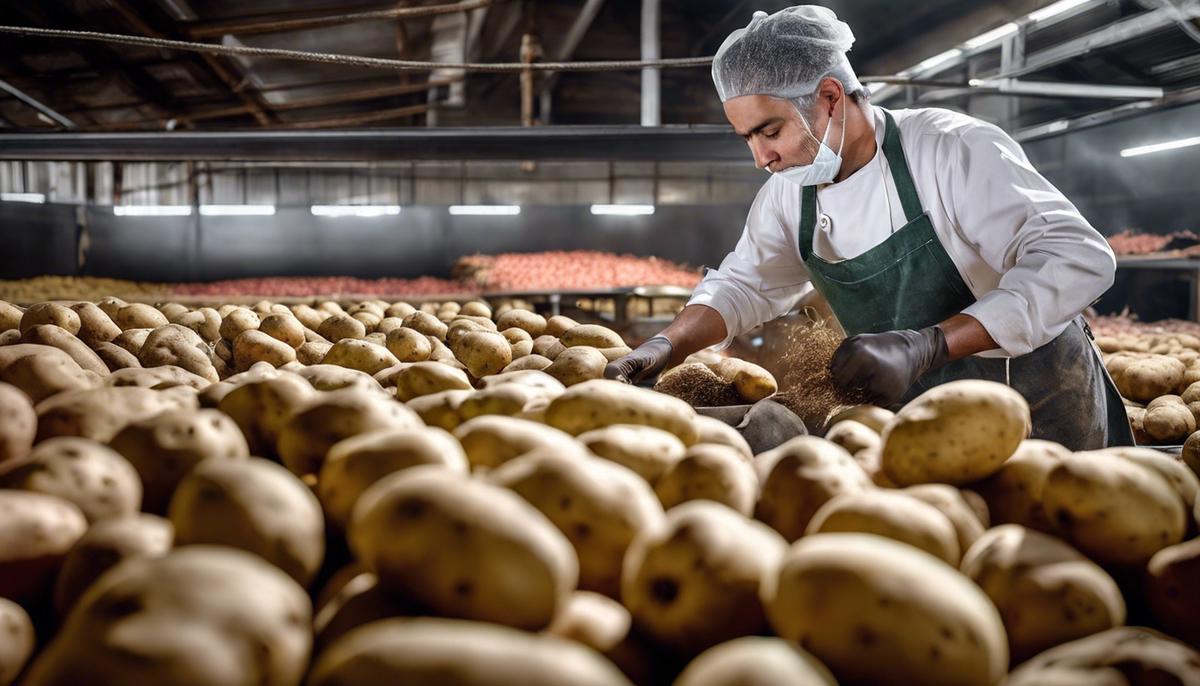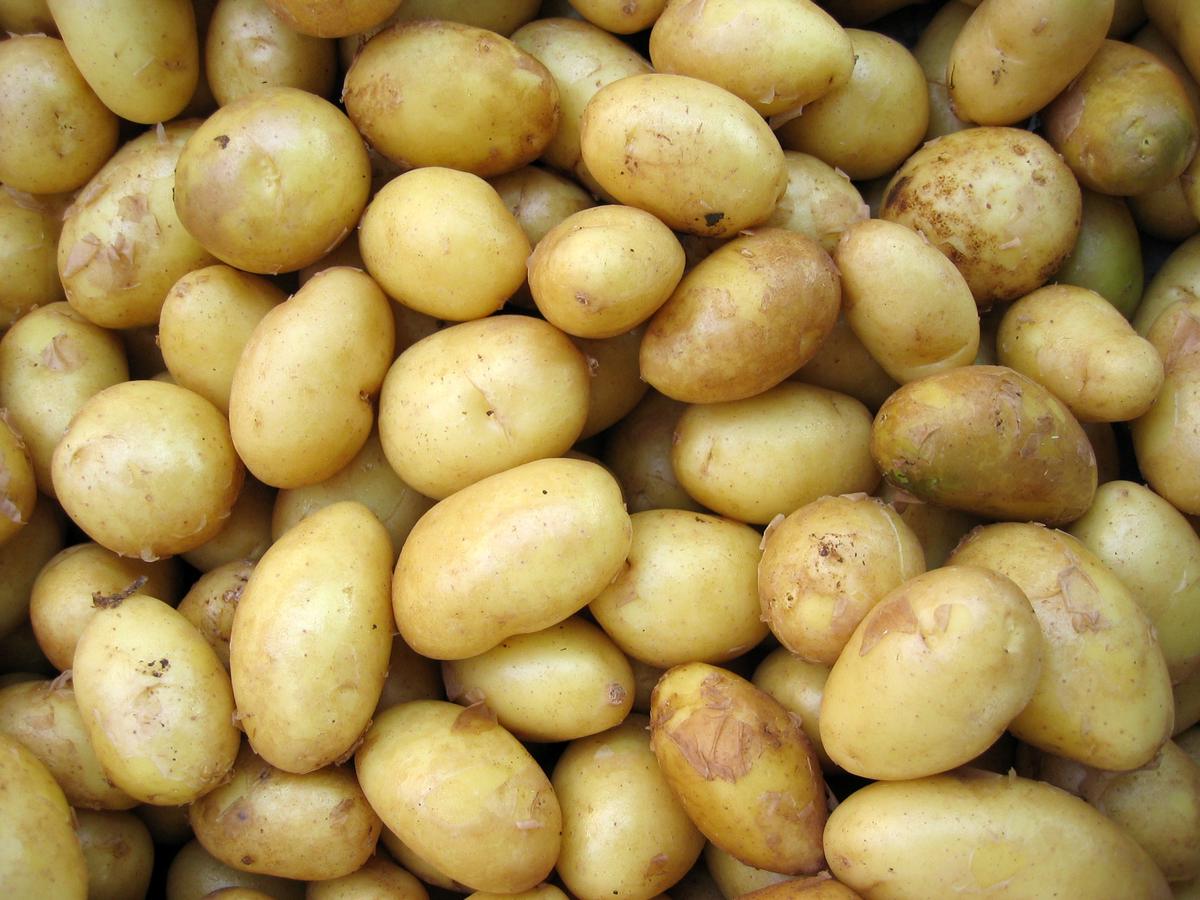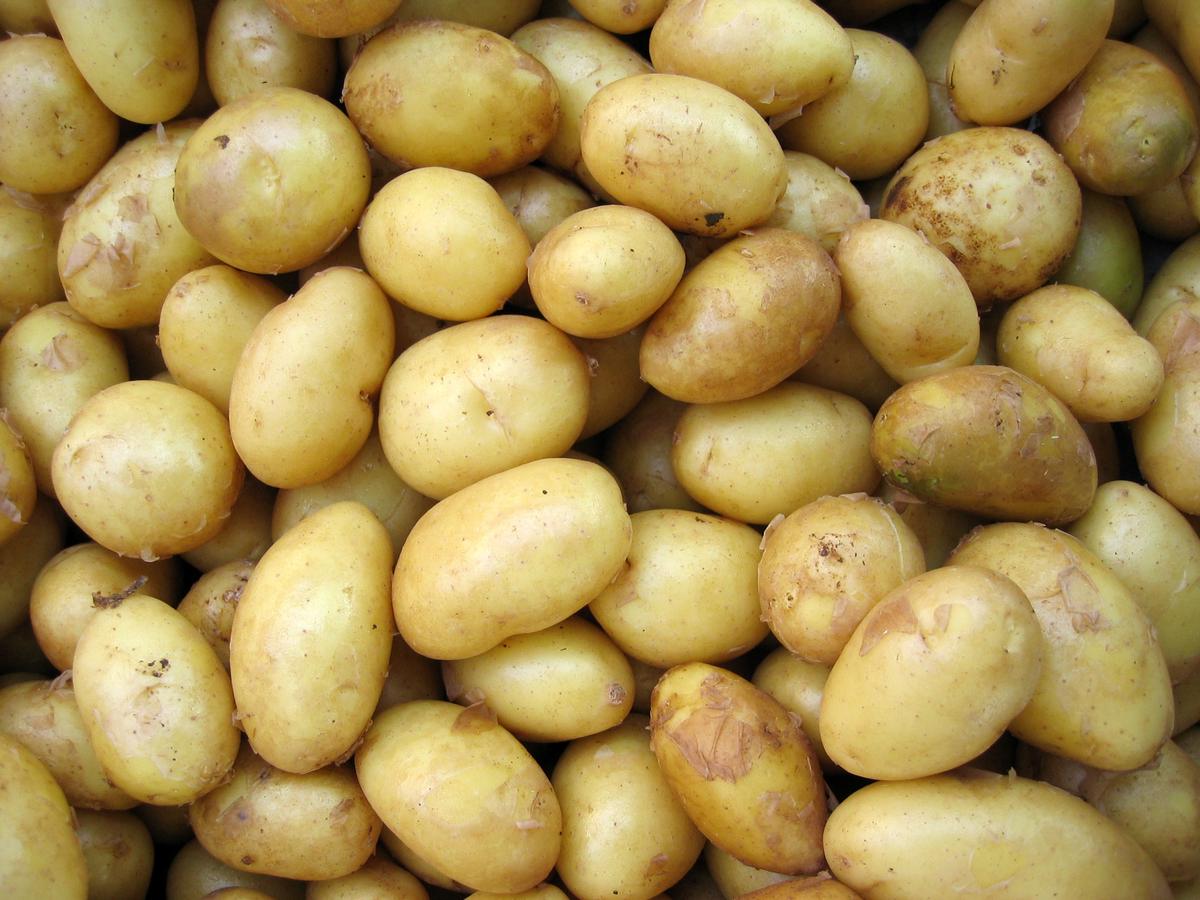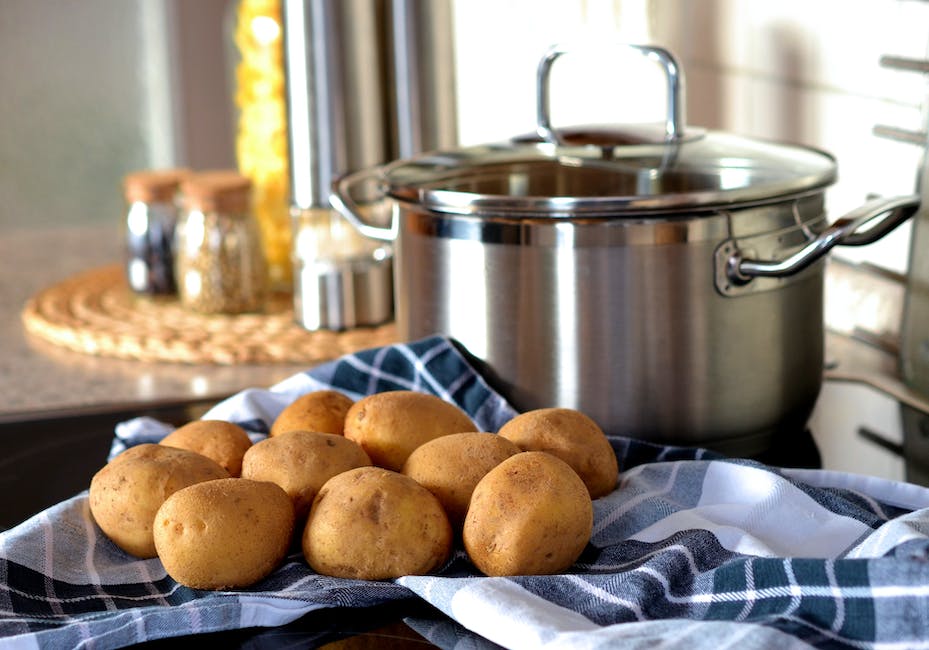Mastering the Art of Storing Potatoes for Winter

As the temperature starts to steadily drop and winter looms closer, it’s the perfect time to start thinking about storing your plentiful potato harvest. Storing potatoes for the winter months not only means you’ll have a consistent supply of this hearty vegetable, but it also helps reduce food waste and save money. Through this piece of information, we’ll explore how to select the best potatoes for storage, the necessary preparations to ensure their longevity, and the ideal conditions to maintain their freshness. Additionally, we’ll delve into the techniques for regular monitoring and maintenance of your store, ensuring spoilage is identified and removed promptly to minimize waste and ensure a healthy supply throughout the winter months.
Selecting and Preparing Potatoes for Storage
Unleashing the Spud-tacular Potential: A Guide to Choosing and Storing Potatoes
Ah, the humble potato, a silent staple in every pantry. This root crop boasts an undeniable versatility that spans across a myriad of dishes, from nostalgic comfort foods to gourmet mainstays. Today, we peel back the layers and sink our teeth into some robust tips in selecting and storing potatoes for maximum utility and longevity.
Choosing the Ideal Potato
Not all potatoes are made equal, something every enthusiastic hobbyist realizes early in their journey with this starchy wonder. When on the hunt, always opt for firm, well-shaped potatoes that bear no cuts, bruises, or discoloration. A greenish hue, an indicator of a high solanine concentration, is a clear no-go. Remember, smaller potatoes are perfect for boiling, whereas larger ones qualify better for baking and mashing.
Ideal Potato Storage Practices
Once you’ve canvassed the ideal potatoes, the integral part of the process is the way you store them. Providing your potatoes with a cool, dark, and well-ventilated environment will keep them fresher for longer. Think basements, cellars, or cupboards which maintain a temperature between 42-55°F. Avoid the fridge if possible, as cold temperatures convert starches into sugars, resulting in a distinctly sweet flavor that might not be pleasant in every dish.
Keep those potatoes out of plastic bags! Use paper or mesh bags instead, as they allow air circulation, a vital aspect of potato storage. In the absence of these, an open bowl or cardboard box could be substitutes.
Having trouble with sprouts? Storing apples with potatoes releases ethylene gas, which help keep those pesky sprouts at bay. Brilliant!
Preventing Moisture Build-up
Moisture brings about the root of all potato problems—mold and rot. To fend off dampness, avoid washing potatoes before storage. You can brush off noticeable soil, but leave the meticulous scrubbing right before you intend to use them. Moisture invites unwanted guests, such as microorganisms bent on shortening the life span of your spuds.
Separating the Good from the Bad
Bad potatoes can spoil the whole batch if not separated and removed timely. Conduct frequent checks for any signs of decay or sprouting and discard the offending tubers promptly. This practice ensures the spoiling potato does not accelerate the decay of others around it.
To all the potato enthusiasts out there, these are the keys to getting the absolute most from these kitchen must-haves. A good selection process, paired with effective storage techniques, will keep your pantry potato-ready, no matter what the culinary adventure appears on your horizon. Now load up those potato-friendly containers and brace for some tantalizing dishes heading your way!

Ideal Storage Conditions for Potatoes
Perfecting Potato Storage: Ensuring Freshness Over Time
Potato enthusiasts, gather round! Let’s delve into the depths of potato storage and discover how to extend the freshness of this fantastic tuber.
First off, temperature control is essential. Potatoes thrive in chilly, but not freezing, conditions, ideally somewhere between 42-50 degrees Fahrenheit. Regular kitchen refrigerators tend to be too cold, which can turn the starch in potatoes into sugar faster, altering their flavor and texture. However, an unheated basement, an insulated garage, or a root cellar would be ideal – somewhat cool, a little moist, and decently ventilated. Embrace these conditions, and your potatoes will thank you!
Lighting makes a huge difference too. Keep your precious potatoes out of direct light, which can cause them to sprout and develop patches of green. Darkness encourages your potatoes to stay dormant and extend their shelf-life. A thick, opaque storage bag or a cardboard box would be a great choice – not only does it block light, but it also allows for adequate air circulation.
Ventilation is tricky – too much and your potatoes will dry out, too little, and they’ll suffocate. Never store them in a tightly sealed bag or container. Instead, opt for mesh bags, woven baskets, or bins with ventilation holes that allow the right amount of airflow while protecting your tubers from physical damage.
Lastly, be mindful of the company your potatoes keep! Certain fruits and vegetables, like apples and onions, release a gas called ethylene as they ripen. This can make potatoes sprout prematurely, so avoid storing these together. However, an innovative trick suggests storing an apple with your potatoes if they’ve already sprouted. The ethylene gas from the apple should slow the sprouting process and help your potatoes last longer.
There you have it, folks, the keys to optimal potato storage. By adjusting the temperature, light, ventilation, and company, you can enjoy fresh potatoes for a longer time. Happy potato storing!

Monitoring and Maintenance of Stored Potatoes
Now that a comprehensive guide has been given on every spud lover’s dream – potato storage, let’s dive right into how often one should check on those stored tubers and the key indications to be watchful of.
Frequency of inspection is a vital aspect when it comes to ensuring longevity and quality of stored potatoes. A rule of thumb in our delightful pursuit is, inspect the potatoes at least once every week or two. This is to ensure that, if at all, any issues of spoilage have begun, they can be arrested early and your other potatoes remain unaffected.
The clues on what to specifically look out for when examining stored potatoes can be summed up in three words; shriveled, sprouted, and soft.
As we aim for storage perfection, a shriveled potato is a definitive signal of a moisture shortage. Potatoes need just a certain amount of moisture around them to prevent desiccation. If shriveled samples are observed — these tubers have already lost an excessive amount of moisture.
Secondly, the presence of sprouts should always raise a flag. Although sprouting isn’t necessarily a sign of bad potatoes, it usually indicates that the potatoes are aging. Cut off the sprouts before cooking, since sprouts, along with green spots, can contain harmful toxins.
Soft potatoes are another thing to keep check of. Potatoes, when properly stored should have a firm texture. If an indent remains after light pressure is applied to the skin, or if the potato has turned mushy, suspect spoilage.
Moving beyond the general inspection, a keen nose might save your entire stash! A distinctive sour or musty odor can indicate the start of bacterial or fungal growth. Remove and discard these offenders immediately to protect the rest.
Lastly, remember to always, and we mean always, purge the bad right away. If you’ve found spoilt or questionable potatoes, it’s crucial to remove them swiftly to guard the remaining spuds.
To sum it up, to become the guru of potato storage, you need a dollop of vigilance and a pinch of inspection skills. So go ahead and smile, knowing that in your pursuit of the ultimate potato storage practice, you’ve got one more piece of the puzzle right. The inspector is now ready to go!

Embracing the process of storing potatoes effectively for winter will ensure you have a bountiful supply of this delicious and versatile ingredient, making for some nourishing meals during the colder months. In understanding the steps from selecting wholesome, disease-free potatoes, preparing them properly for storage, and taking time to set up ideal storage conditions, you’ll be assured of maintaining their freshness. Regular checks are crucial in this venture, and equipped with our guide on sign of spoilage, you can ensure that the stored potatoes stay healthy, and any potential rot is promptly dealt with, an essential factor in reducing waste and maximizing the yield from your harvest.



